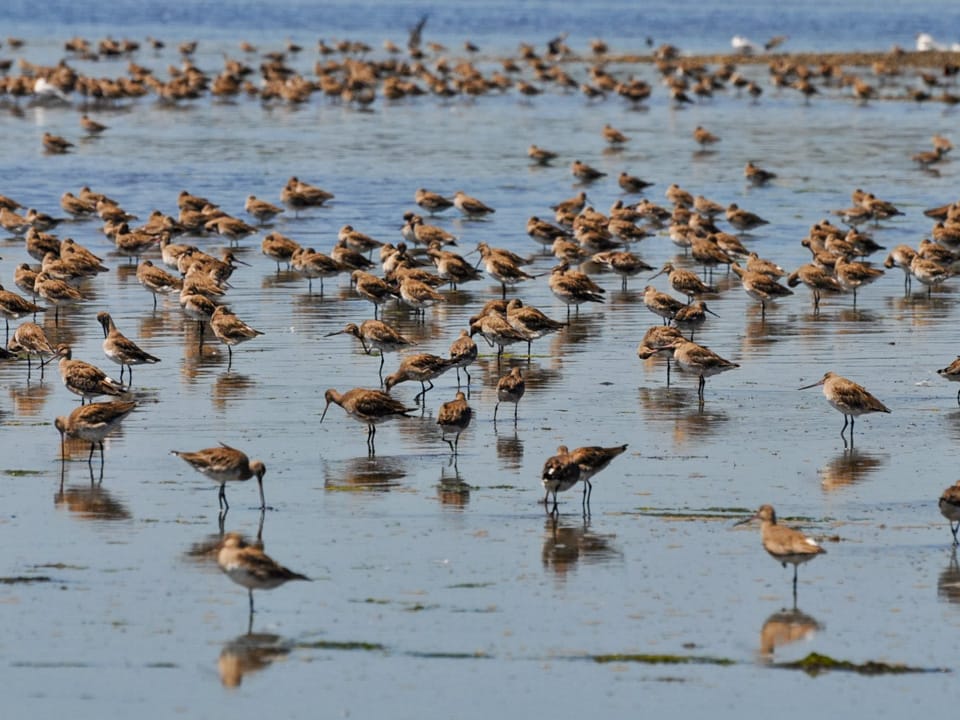Thirty years ago the vision of a “network of sister reserves” linking key sites for shorebirds throughout their ranges took an important step toward becoming a reality: March 1989 saw the designation of the first three Western Hemisphere Shorebird Reserve Network (WHSRN) sites in South America, joining the four sites already designated in North America.
The three sites—Bigi Pan, Wia and Coppenamemonding—cover almost the entire coastline of Suriname. For their designation ceremony, the president of Suriname declared a national holiday. Attending the ceremony, George Finney (now a WHSRN Councilor emeritus) saw Semipalmated Sandpipers that had been banded in the Bay of Fundy (WHSRN’s second site) just eight days earlier.
From those early visionary days when the connectivity between sites was just being discovered, WHSRN has grown to include 106 sites in 17 countries, conserving 38 million acres of shorebird habitat. Efforts to manage, safeguard and protect these critical sites for shorebirds are led by 412 partner organizations. And the network continues to grow: in the past year alone six sites have joined WHSRN, incorporating two new countries into the network (Venezuela and Bonaire-The Netherlands) and a total of 262,378 acres of shorebird habitat (due in part to the expansion of the Cape Romain WHSRN site). At the 100th site designation ceremony for the Georgia Barrier Islands, I noted that the total extent of WHSRN sites is now equivalent to the area of Tajikistan, or, coincidentally, the U.S. state of Georgia.





 Back to all
Back to all


